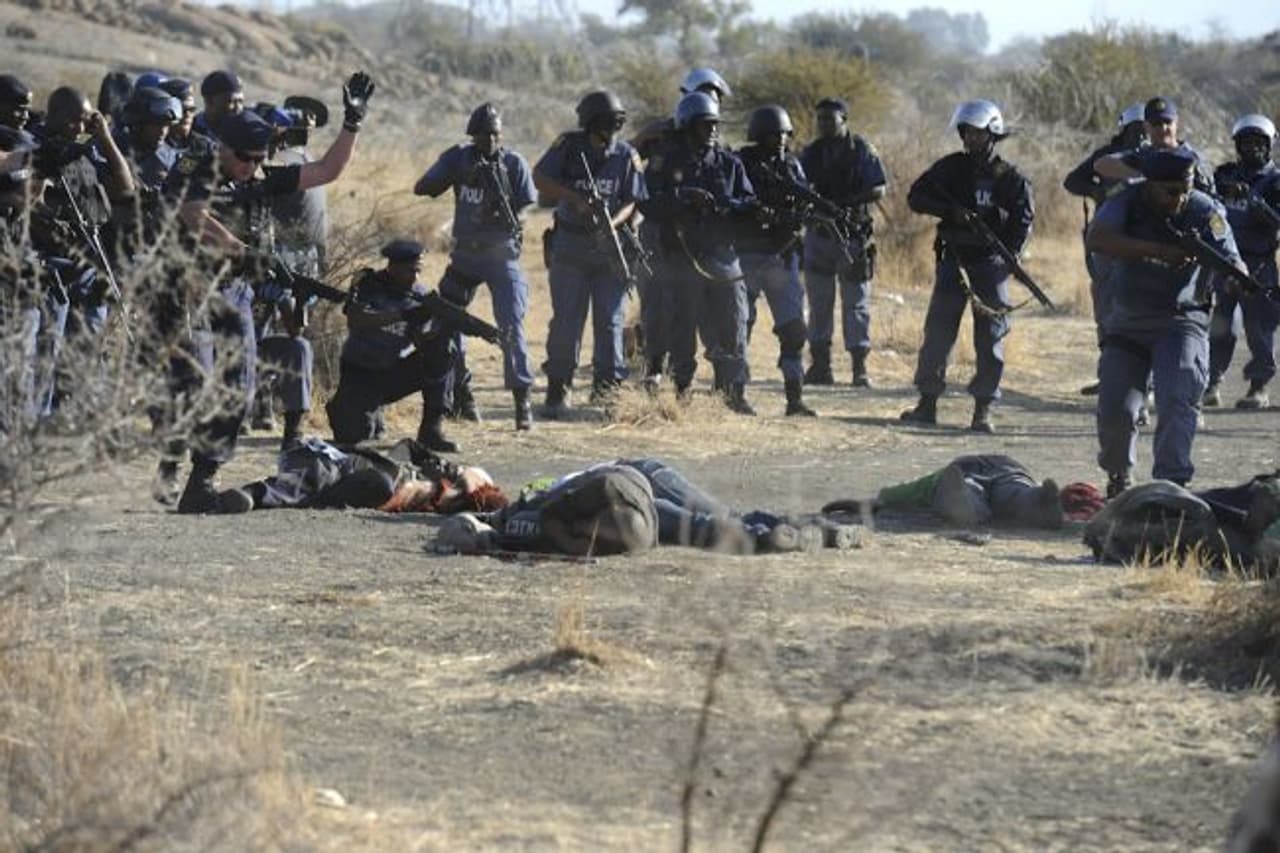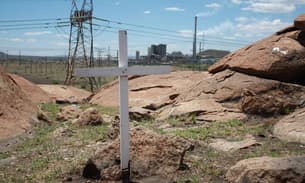
Fresh allegations of cover-up in Marikana massacre
On 16 August, South African police fired 400 live rounds and 500 rubber bullets into a crowd of striking miners, killing 34 and injuring 78. Three months on from the bloodiest day of the post-apartheid era, accusations of an official cover up continue to grow, fanning the flames of rising tensions between mine workers, police, business owners and trade union bosses.
International condemnation of the police-led massacre was swift and unequivocal. But in the months that followed, it was the miners and not the security services that faced the long arm of the law.
In late August, 270 employees from Lonmin’s Marikana platinum mine appeared in court, charged with the murder of their colleagues. Although the charges were subsequently dropped, suspicion that the authorities had shielded the security services at the expense of justice has not abated.
As the Guardian reported yesterday, levels of distrust continued to deepen this week. On Monday, new photographic evidence was presented to an inquiry charged with investigating the deaths of 46 workers over a six-week period, prompting claims that police attempted to doctor the crime scene.
Captain Jeremiah Apollo Mohlaki, the crime scene investigator, was presented with two sets of photographs from the day of the killings. The first shows the crime scene in daylight, the second was taken after dark.
According to The Guardian, ‘in one picture, a dead man is seen lying on rocky ground near the mine; a second picture, taken later that same day, is identical except that a yellow-handled machete is now lying under the man’s right hand.’
The official version of events supplied by the South African police had suggested that the killing of the miners was an act of self-defence.
Doctored murder scene?
National police commissioner Riah Phiyega told a press conference on 17 August that ‘militant groups stormed towards the police firing shots and wielding dangerous weapons. Police retreated systematically and were forced to use maximum force to defend themselves.’
But the photographs presented on Monday have now been described as evidence of an official cover-up. The later scenes, it is claimed, were doctored to fit police descriptions of a well-armed crowd that had made the first move. These ‘self-defence’ allegations had already been rebuffed by eyewitnesses and autopsy reports are alleged to show that several of the miners had been shot in the back.
In a detailed investigation by South African news magazine Daily Maverick, Greg Marinovich has also produced evidence to suggest that most of the dead faced ‘execution-style’ killings some 300 metres behind the main crime scene.
Video evidence presented at Monday’s inquiry cast further doubt on police claims of self-defence. The footage shows that some of the slain miners may have been handcuffed.
Allegations of an official cover-up will contribute further to the erosion of public trust that continues to plague South African political and business elites. In addition, it is likely to widen the gulf between workers and trade union bosses that has grown deeper since the summer.
As The Bureau reported last month, the increasingly cosy relationship between mine owners and former union stalwarts has undermined confidence in the power – and indeed, the will – of unions to protect their workers against insecure employment and pitiable work conditions.
Industrial unrest
In recent months, a number of incidents have highlighted the fragility of industrial relations in the post-Marikana South Africa. The violence of August 16 came against a backdrop of country-wide miners’ strikes. Business owners have responded by making mass redundancies and beefing up security measures against dissenters.
On 4 October, a 48-year old worker at an Anglo American Platinum mine was killed after police opened fire on workers gathering for an update on a wildcat strike. The next day, 12,000 workers were dismissed.
Elsewhere, AngloGold Ashanti has also seen most of its 35,000 workers downing their tools in an illegal strike, and industrial action is ongoing at Gold Fields mining sites. South Africa’s mining sector carries significant economic clout, accounting for a fifth of economic output.
According to Paul Holden, author of Who Rules South Africa, two million South Africans are involved in some form of low-level protest every year. 2012 has seen the highest and most consistent number of protests per month since apartheid.




